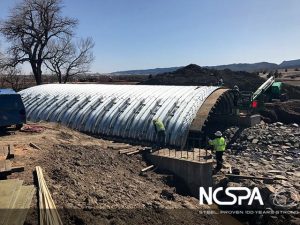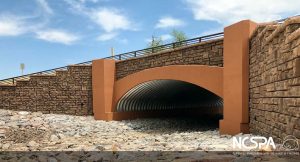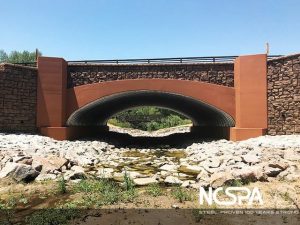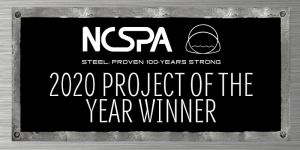By: Contech Engineered Solutions
 Chatfield Dam and Reservoir is a dam and artificial lake located on the South Platte River near Littleton, Colorado. Built by the United States Army Corps of Engineers (Corps) as a response to the disastrous flood of 1965, it now serves as one of many water supply reservoirs for the city of Denver. Construction began in 1967 and ended in 1975. In 2017, the Chatfield Reservoir Reallocation project was initiated to address the growing demand for water in Colorado’s Front Range and on northeast Colorado farms. The Corps determined that Chatfield Reservoir can accommodate and store an additional 20,600 acre feet of water without compromising its flood control function. This additional storage space will be used by municipal and agricultural water providers to help meet the diverse needs of the state.
Chatfield Dam and Reservoir is a dam and artificial lake located on the South Platte River near Littleton, Colorado. Built by the United States Army Corps of Engineers (Corps) as a response to the disastrous flood of 1965, it now serves as one of many water supply reservoirs for the city of Denver. Construction began in 1967 and ended in 1975. In 2017, the Chatfield Reservoir Reallocation project was initiated to address the growing demand for water in Colorado’s Front Range and on northeast Colorado farms. The Corps determined that Chatfield Reservoir can accommodate and store an additional 20,600 acre feet of water without compromising its flood control function. This additional storage space will be used by municipal and agricultural water providers to help meet the diverse needs of the state.
As part of this project, the roadways along the perimeter of the reservoir were redesigned and a bridge was needed to traverse Deer Creek.
The project’s engineer, HDR, selected a 40′-2″ x 9′-1″ structural plate bridge, 60′-3″ in length, as the best solution to be installed over Deer Creek for its design flexibility. The shape of the structure was designed specifically for this site with a very low profile and a large span in order to accommodate three utility lines. Additionally, the structural plate bridge was tall enough for flood protection, complementary to the natural beauty of the park’s native landscape, and able to be constructed quickly and efficiently with a cost savings over other options.
 “The structural plate box culvert was ideal for this location,” stated Rob Thompson, PE, with HDR. “It is an economical solution that provides the required hydraulic capacity allowing for a uniformly constructed channel bed, easily accommodates utilities buried along the roadway, and allows for the efficient construction of the aesthetic retaining walls requested by the owner.”
“The structural plate box culvert was ideal for this location,” stated Rob Thompson, PE, with HDR. “It is an economical solution that provides the required hydraulic capacity allowing for a uniformly constructed channel bed, easily accommodates utilities buried along the roadway, and allows for the efficient construction of the aesthetic retaining walls requested by the owner.”
Concrete Express (CEI) liked that Contech Engineered Solutions could supply not only a bridge for the stream crossing but also a pedestrian bridge. The finished bridges were both in compliance with AASHTO and LRFD standards.
